Understanding the Anatomy of the Foot
To grasp the importance of foot care, it’s essential to have a basic understanding of the foot’s anatomy. The foot is a complex structure that consists of multiple bones, muscles, tendons, ligaments, and arches, all working together to support our body weight and facilitate movement.
- Bones: The foot is comprised of 26 bones, including the tarsal bones (ankle), metatarsal bones (midfoot), and phalanges (toes). These bones provide structural support and flexibility.
- Muscles: There are over 20 muscles in the foot, enabling various movements such as flexing, extending, and rotating the toes and ankle. These muscles also help maintain the arches of the foot.
- Tendons: Tendons connect muscles to bones and are crucial for transmitting the force generated by muscles to the bones of the foot. The Achilles tendon, for example, connects the calf muscles to the heel bone.
- Ligaments: Ligaments are tough, fibrous tissues that connect bones to other bones. In the foot, ligaments help stabilize joints and prevent excessive movement. The plantar fascia is a critical ligament that runs along the sole of the foot, supporting the arch.
- Arches: The foot has three main arches: the medial longitudinal arch (along the inner side of the foot), the lateral longitudinal arch (along the outer side of the foot), and the transverse arch (across the middle of the foot). These arches act as shock absorbers, distributing weight evenly and providing balance.
- Joints: The foot has numerous joints, including those in the toes, the ankle joint, and various joints within the midfoot. These joints allow for movement and flexibility while maintaining stability.
- Nerves and Blood Vessels: The foot is rich in nerves and blood vessels that supply sensory information and oxygen to the tissues. These nerves help us sense temperature, pressure, and pain, allowing us to navigate our environment safely.
Understanding the intricate interplay of these anatomical components is crucial for appreciating why proper foot care, including arch support, is essential. The arches, in particular, play a significant role in maintaining the foot’s structural integrity and preventing common foot problems.
The Significance of the Arch
The arch in the human foot is a remarkable and vital anatomical feature that plays a crucial role in supporting our body weight and facilitating smooth and efficient movement. Understanding the significance of the arch is essential in appreciating its importance for overall foot health.
- Stability and Weight Distribution: The arch of the foot serves as a natural shock absorber. When we stand, walk, or run, our body weight is transmitted downward through our feet. The arch helps distribute this weight evenly across the foot, preventing excessive pressure on any one part. This even distribution of weight minimizes strain on joints, muscles, and ligaments, reducing the risk of injury.
- Balance: The arch also contributes to our balance and stability. It acts as a spring, allowing the foot to flex and absorb the impact of each step. This flexibility helps us maintain balance on uneven surfaces and adapt to changes in terrain. Whether we are navigating rocky trails or walking on a flat surface, the arch plays a pivotal role in ensuring our stability.
- Efficient Movement: During walking and running, the arch of the foot functions as a lever, converting energy from the muscles into forward motion. The arch’s ability to store and release energy with each step makes our gait more energy-efficient, reducing the effort required for movement.
- Shock Absorption: When our feet make contact with the ground, especially during activities like running or jumping, the arches compress to absorb the shock generated by impact. This shock absorption not only protects the feet but also extends to the entire musculoskeletal system, reducing the risk of injury to the knees, hips, and spine.
- Foot Function: Properly maintained arches promote the foot’s overall health and function. They prevent excessive rolling of the foot inward (pronation) or outward (supination), which can lead to gait abnormalities and discomfort. A well-supported arch ensures that the foot maintains its natural alignment, reducing the risk of common foot conditions.
In summary, the arch of the foot is not just a structural component; it is a dynamic and adaptive part of our anatomy that contributes to our overall well-being. Its ability to provide stability, distribute weight, and absorb shock makes it essential for comfortable and pain-free movement. Understanding the significance of the arch underscores the importance of proper foot care, including the use of arch support when needed, to maintain healthy and functional feet throughout our lives.
Common Issues Related to Arch Problems
Arch problems in the feet can lead to various discomforts and conditions, affecting one’s overall mobility and well-being. Understanding these common issues related to arch problems is crucial for early recognition and appropriate management. Here are some of the most prevalent arch-related concerns:
- Plantar Fasciitis:
- Description: Plantar fasciitis is a painful condition that results from inflammation of the plantar fascia, a thick band of tissue that runs along the bottom of the foot from the heel to the toes.
- Cause: One of the leading causes of plantar fasciitis is excessive strain on the arch due to overuse or inadequate arch support. Activities like running, prolonged standing, or wearing unsupportive footwear can contribute to this condition.
- Symptoms: The hallmark symptom is sharp, stabbing pain in the heel, particularly when taking the first steps in the morning or after prolonged periods of rest.
- Flat Feet (Pes Planus):
- Description: Flat feet, or pes planus, occurs when the arches of the feet collapse, causing the entire sole to make contact with the ground.
- Cause: Flat feet can be hereditary, but they can also develop due to factors such as muscle weakness, injury, or excessive pronation (rolling inward) of the feet.
- Symptoms: Individuals with flat feet may experience discomfort, fatigue, and pain in the arches, heels, or ankles. They may also have difficulty finding comfortable shoes.
- Overpronation:
- Description: Overpronation is a biomechanical issue where the feet roll excessively inward while walking or running.
- Cause: Weak arches or improper foot mechanics can lead to overpronation. It can also be related to flat feet.
- Symptoms: Overpronation can result in knee pain, shin splints, and arch pain. It can affect the alignment of the entire lower body, leading to issues in the knees, hips, and lower back.
- High Arches (Pes Cavus):
- Description: High arches, or pes cavus, are characterized by an unusually high arch along the bottom of the foot.
- Cause: High arches can be inherited or develop due to neurological conditions. People with high arches may have less shock absorption in their feet.
- Symptoms: High arches can lead to pain and instability in the arch area, as well as increased pressure on the balls and heels of the feet.
These common arch-related problems can significantly impact one’s daily life and physical activities. It’s important to note that early intervention, such as proper arch support and footwear, can help alleviate symptoms and prevent these issues from worsening. If you experience persistent foot discomfort or pain, consulting a healthcare professional or podiatrist is advisable for a proper diagnosis and tailored treatment plan.
Who Might Need Arch Support?
Arch support is a valuable consideration for a wide range of individuals, and its importance extends beyond those with existing foot issues. Here’s a more informative breakdown of who might benefit from arch support:
- Athletes and Active Individuals:
- Why: Athletes and those who engage in regular physical activity subject their feet to increased stress and impact. Arch support can play a pivotal role in preventing injuries such as plantar fasciitis, shin splints, and stress fractures. It also enhances performance by promoting proper foot alignment and reducing fatigue during high-impact activities like running, jumping, and sports.
- People with Flat Feet (Pes Planus):
- Why: Flat feet, a condition characterized by minimal or collapsed arches, can lead to various discomforts, including arch pain, heel pain, and leg fatigue. Arch support provides essential structural reinforcement, redistributing weight evenly across the foot and alleviating stress on tendons and ligaments.
- Individuals with Overpronation:
- Why: Overpronation, an abnormal inward rolling of the feet during walking, can contribute to a range of issues, including knee pain, hip discomfort, and lower back problems. Arch support helps correct the gait by preventing excessive inward movement, reducing the risk of injuries, and improving overall biomechanics.
- Seniors:
- Why: Aging can bring about changes in foot structure and function, including weakened arches. Arch support becomes crucial for seniors to maintain balance, prevent falls, and alleviate discomfort associated with age-related foot changes. It enhances stability and reduces the risk of injuries.
- Pregnant Women:
- Why: Pregnancy often results in weight gain and changes in body alignment. These changes can put additional pressure on the feet, leading to discomfort, swelling, and arch strain. Arch support can provide relief by reducing the load on the feet and promoting proper alignment during pregnancy.
- People with High Arches (Pes Cavus):
- Why: High arches can create an uneven distribution of weight, leading to pain in the balls and heels of the feet. Arch support helps normalize weight distribution, reduce pressure points, and enhance stability, making walking and standing more comfortable for individuals with high arches.
- Those Recovering from Foot Injuries:
- Why: Individuals in the process of healing from foot injuries, surgeries, or conditions like plantar fasciitis require adequate support to facilitate recovery. Arch support assists in maintaining proper foot alignment, reducing strain on injured tissues, and preventing reinjury.
In summary, arch support is a versatile solution with benefits that extend to both the prevention and management of various foot-related concerns. Determining the need for arch support depends on individual factors, including foot type, activity level, and specific foot issues. Seeking guidance from a podiatrist or a footwear specialist is recommended to select the most appropriate arch support solution tailored to individual needs and circumstances.
The Benefits of Arch Support
Arch support is more than just a comfort feature in footwear; it offers a multitude of benefits that significantly impact overall foot health and well-being. Understanding these advantages underscores the importance of proper arch support. Here are the key benefits:
- Reduced Pain and Discomfort: One of the primary benefits of arch support is the alleviation of pain and discomfort. It provides critical structural reinforcement to the arches, reducing strain on the muscles and ligaments that support them. This, in turn, minimizes the occurrence of conditions such as arch pain, plantar fasciitis, and heel spurs.
- Improved Posture: Proper arch support helps maintain the natural alignment of the feet. When the arches are adequately supported, it positively influences the alignment of the entire lower body, including the ankles, knees, hips, and lower back. This can lead to improved posture, reduced back pain, and a decreased risk of musculoskeletal issues.
- Enhanced Stability: Arch support contributes to better stability and balance. It prevents overpronation (excessive inward rolling of the feet) and supination (excessive outward rolling), which can lead to instability and increased risk of falls. Enhanced stability is particularly important for athletes and individuals who are physically active.
- Shock Absorption: The arches of the feet act as natural shock absorbers. Arch support helps distribute the impact forces generated during activities like walking, running, and jumping. This reduces the stress on joints and soft tissues, providing effective shock absorption and minimizing the risk of injuries.
- Prevention of Foot Conditions: Arch support serves as a preventive measure against common foot conditions. It helps maintain the integrity of the arches, reducing the likelihood of developing flat feet, high arches, and associated discomfort. It also minimizes the risk of developing conditions like bunions and hammertoes.
- Enhanced Comfort: Shoes with proper arch support offer increased comfort, especially during extended periods of standing, walking, or running. They reduce fatigue, allowing individuals to stay on their feet for longer durations without experiencing discomfort.
- Improved Gait and Biomechanics: Arch support aids in correcting abnormal gait patterns. By promoting a more natural and balanced stride, it enhances overall biomechanics, reduces the risk of overuse injuries, and contributes to efficient movement.
- Customized Solutions: Arch support solutions come in various forms, including insoles, orthotics, and specialty footwear. These options can be customized to cater to individual needs, ensuring that the level of support is tailored to each person’s unique foot structure and requirements.
- Enhanced Athletic Performance: Athletes often benefit from arch support by achieving more efficient energy transfer, improved stability, and reduced muscle fatigue. This can lead to enhanced athletic performance and reduced risk of injuries during sports and physical activities.
- Long-Term Foot Health: Incorporating arch support into daily footwear choices contributes to long-term foot health. It helps preserve the natural arches and reduces the risk of degenerative foot conditions that can develop over time.
In conclusion, arch support is a fundamental aspect of foot care that offers a wide array of benefits, ranging from pain relief and improved posture to enhanced stability and shock absorption. Whether for preventive purposes or the management of existing foot issues, the advantages of proper arch support are significant and contribute to overall foot health and well-being.
Types of Arch Support
Arch support comes in various forms, each designed to cater to different foot types and specific needs. Understanding these types of arch support can help individuals choose the most suitable option for their comfort and foot health. Here are the common types:
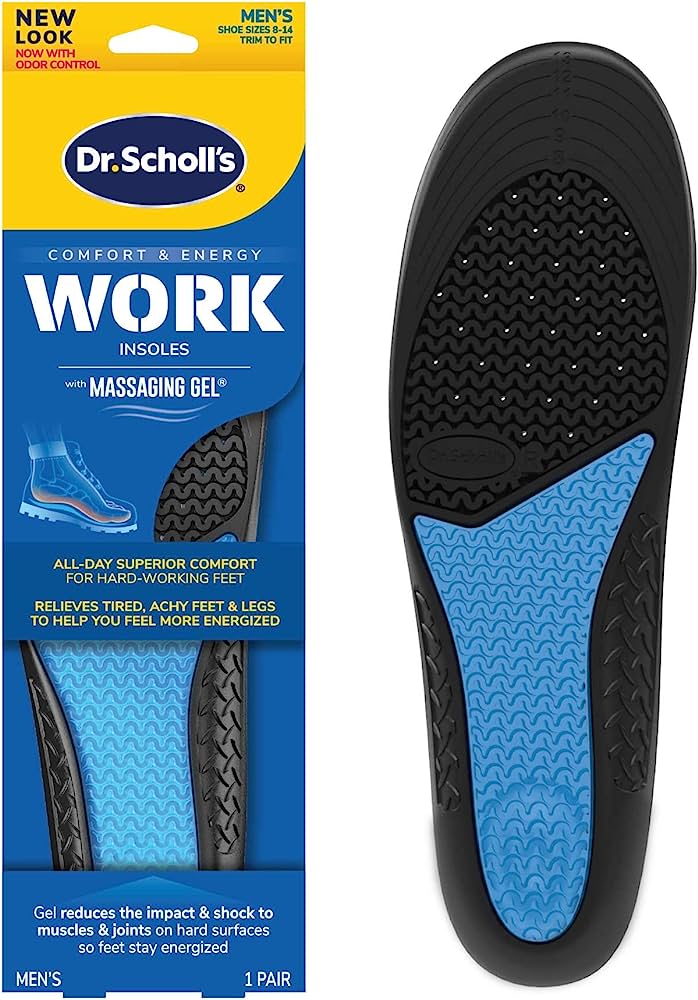
- Arch Support Insoles:
- Description: Arch support insoles are cushioned inserts that can be placed inside regular shoes. They are available in various shapes and materials to provide varying levels of support.
- Benefits: These insoles offer additional cushioning and structural support to the arches, redistributing weight and reducing strain. They are convenient and can be used with a wide range of footwear.
- Arch Support Shoes:
- Description: Arch support shoes are specially designed footwear with built-in support for the arches. They are available in a variety of styles, including athletic shoes, casual shoes, and dress shoes.
- Benefits: Arch support shoes provide consistent support throughout the day, making them an excellent choice for those who require continuous support and comfort. They are suitable for various activities and occasions.
- Custom Orthotics:
- Description: Custom orthotics are personalized arch support inserts that are custom-made based on an individual’s foot shape and specific needs. They are typically prescribed by healthcare professionals such as podiatrists.
- Benefits: Custom orthotics offer the highest level of precision and support. They address individual biomechanical issues, making them ideal for severe arch problems, foot deformities, and chronic conditions.
- Over-the-Counter Orthotics:
- Description: Over-the-counter orthotics are pre-made arch support inserts available without a prescription. They come in various shapes and sizes to cater to different arch types.
- Benefits: Over-the-counter orthotics provide a cost-effective solution for mild to moderate arch support needs. They are readily available and can offer relief from common foot discomfort.
- Sandals and Flip-Flops with Arch Support:
- Description: Some sandals and flip-flops are designed with contoured footbeds that provide arch support. These are popular choices for warm-weather footwear.
- Benefits: Arch support sandals and flip-flops offer comfort and support during casual activities. They can be convenient for individuals who want arch support without wearing closed-toe shoes.
- Compression Socks and Sleeves:
- Description: Compression socks and sleeves often include arch support features. They use gentle pressure to support the arch and promote blood circulation.
- Benefits: These options are suitable for individuals who require both arch support and compression therapy, such as those with conditions like plantar fasciitis.
- Strap-On Arch Supports:
- Description: Strap-on arch supports are wrap-around devices that provide adjustable support to the arch. They can be worn inside or over socks.
- Benefits: These supports allow for customized comfort and support levels. They are often used by individuals who need flexibility in adjusting the level of arch support throughout the day.
The choice of arch support type depends on individual preferences, foot conditions, and lifestyle. It’s advisable to consult with a healthcare professional or podiatrist to determine the most suitable option for addressing specific arch-related concerns and achieving optimal foot comfort and health.
Choosing the Right Arch Support
When considering arch support options, Atlas Arch Support can be an excellent choice for many individuals seeking reliable and effective support for their feet. Here’s a brief explanation of why Atlas Arch Support is worth considering:
Choosing the Right Arch Support: Consider Atlas Arch Support
Atlas Arch Support is a well-regarded brand that offers a range of arch support products, including insoles and orthotic solutions. Here are some reasons why Atlas Arch Support may be a suitable choice:
- Customized Solutions: Atlas Arch Support provides customizable options, allowing individuals to tailor their arch support to their specific needs. Customization is essential, as not all feet are the same, and individual arch structures can vary.
- Advanced Technology: Atlas Arch Support products often incorporate advanced technology and materials designed to enhance comfort and support. These technologies can include cushioning materials, biomechanical designs, and moisture-wicking properties for added comfort.
- Variety of Styles: Atlas Arch Support offers a variety of styles, including insoles for different types of shoes (athletic, casual, and formal) and specific arch support solutions for various foot conditions. This wide range ensures that individuals can find the right product for their lifestyle and footwear choices.
- Professional Guidance: Atlas Arch Support products are often recommended and prescribed by healthcare professionals, including podiatrists. Seeking professional guidance when selecting Atlas Arch Support products can help ensure that you choose the most appropriate option for your individual needs.
- Quality and Durability: Atlas Arch Support is known for producing high-quality, durable products. Investing in quality arch support can provide long-lasting benefits and reduce the need for frequent replacements.
- Reduced Foot Discomfort: Whether you have flat feet, high arches, or experience foot pain, Atlas Arch Support products are designed to reduce discomfort, promote proper foot alignment, and enhance overall foot health.
When choosing the right arch support, including Atlas Arch Support products in your consideration can be a wise decision. However, it’s important to remember that the best choice will depend on your specific foot type, any existing foot conditions, and your lifestyle. Consulting with a healthcare professional or podiatrist is advisable to receive personalized recommendations and ensure you select the most suitable arch support solution for your needs.
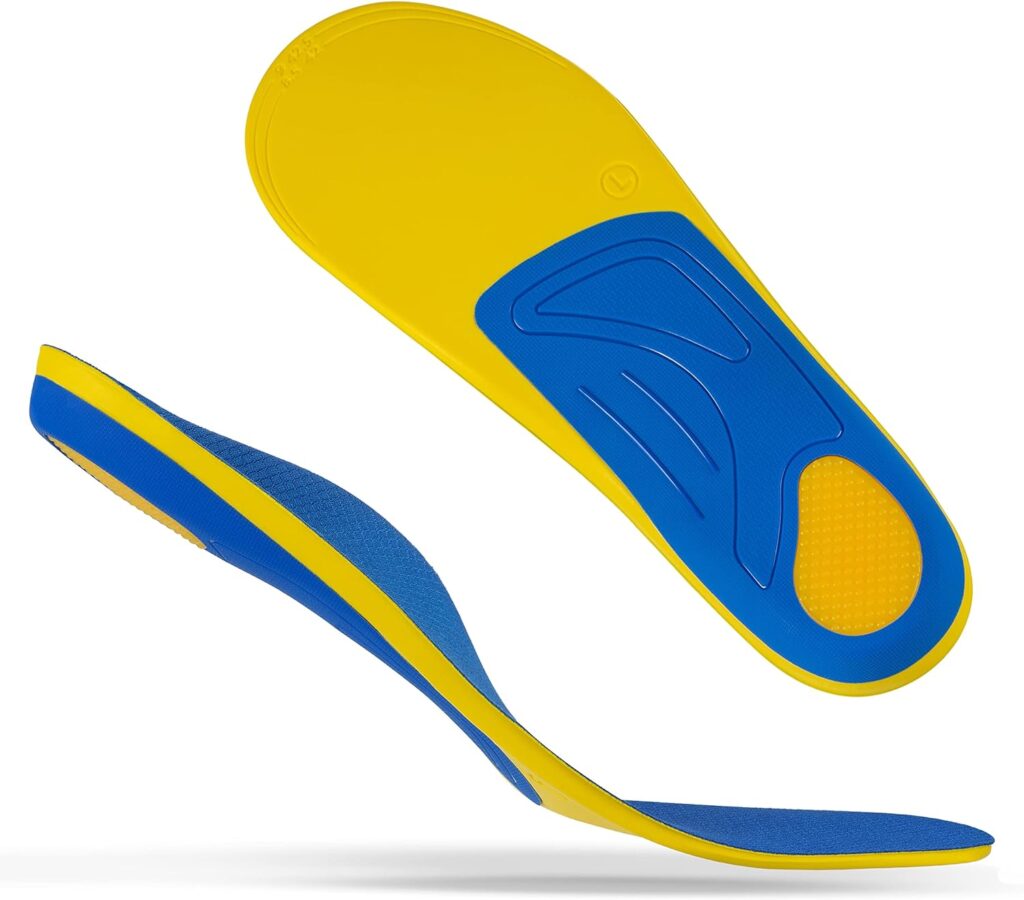
Proper Footwear and Maintenance
Proper Footwear and Maintenance for Healthy Feet
Footwear plays a vital role in maintaining foot health and preventing various foot-related issues. Choosing the right shoes and practicing proper maintenance are essential steps in ensuring comfort and well-being. Here’s a guide to proper footwear and maintenance practices:
1. Selecting the Right Footwear:
- Appropriate Fit: Choose shoes that fit well and provide ample space for your toes to move freely. Ensure that the shoe size is neither too tight nor too loose, as this can lead to discomfort and foot problems.
- Arch Support: Opt for shoes with adequate arch support, especially if you have flat feet, high arches, or experience arch-related discomfort. Look for shoes with built-in arch support or consider using arch support insoles or orthotics.
- Cushioning: Shoes should have sufficient cushioning in the midsole and heel area to absorb shock and reduce the impact on your feet during walking or running.
- Breathability: Choose footwear made from breathable materials to prevent moisture buildup, which can lead to fungal infections and foot odor. Look for shoes with mesh panels or moisture-wicking linings.
- Activity-Specific Shoes: Wear activity-specific shoes for sports or physical activities. Running shoes for jogging, hiking boots for hiking, and cross-training shoes for gym workouts provide the necessary support and stability.
- Proper Closure: Ensure that shoes have a secure closure mechanism, such as laces, straps, or buckles, to keep your feet stable and prevent them from sliding inside the shoes.
- Rotate Shoes: Avoid wearing the same pair of shoes every day. Rotating between different pairs allows each pair to air out and reduces wear and tear on the shoes and your feet.
2. Footwear Maintenance:
- Regular Cleaning: Keep your shoes clean by wiping them down regularly. For athletic shoes, remove insoles and wash them separately. Cleaning helps prevent odor and extends the lifespan of your footwear.
- Shoe Inserts: Consider using removable insoles or arch support inserts if your shoes lack adequate support. These inserts can be replaced as needed and provide additional comfort.
- Inspect for Wear and Tear: Check your shoes for signs of wear and tear, such as worn-out soles, damaged stitching, or broken heel counters. Replace shoes that show significant wear to maintain proper support.
- Proper Storage: Store your shoes in a cool, dry place to prevent moisture buildup and maintain their shape. Use shoe trees or shoe forms to help preserve the shoe’s structure.
- Alternate Shoes: Give your shoes time to breathe by alternating between different pairs, allowing them to fully dry out between wears.
- Replace When Necessary: Over time, even well-maintained shoes may lose their support and cushioning. Replace your shoes when you notice a decrease in comfort or support.
3. Foot Care Routine:
- Daily Cleaning: Wash your feet daily with mild soap and water, and make sure to dry them thoroughly, especially between the toes.
- Trim Toenails: Keep your toenails trimmed to avoid ingrown nails and infection. Trim them straight across to prevent ingrowth.
- Moisturize: Apply moisturizer to your feet to prevent dryness and cracking, focusing on the heels and the soles of your feet.
- Foot Exercises: Perform simple foot exercises and stretches to maintain foot flexibility and strength. Consult a healthcare professional for specific exercises if you have foot issues.
By following these guidelines for proper footwear selection, maintenance, and foot care, you can contribute to the overall health and comfort of your feet. Remember that your choice of footwear and foot care practices play a crucial role in preventing common foot problems and ensuring that your feet remain healthy and pain-free.
When to Seek Professional Help
- Persistent Pain: If you experience persistent foot pain that doesn’t improve with rest, ice, elevation, and over-the-counter pain relievers, it’s essential to seek professional evaluation. This could be a sign of an underlying condition, such as plantar fasciitis, tendinitis, or stress fractures.
- Foot Deformities: If you notice any changes in the shape or appearance of your feet, toes, or nails, consult a podiatrist. Conditions like bunions, hammertoes, ingrown toenails, or fungal infections require professional assessment and treatment.
- Decreased Mobility: A sudden decrease in your ability to walk or move your foot may indicate a serious injury or condition, such as a sprain, fracture, or nerve compression. Seeking immediate medical attention is crucial in such cases.
- Swelling and Redness: Persistent swelling, redness, or warmth in your feet or ankles could be a sign of an infection, deep vein thrombosis (DVT), or another circulatory issue. Prompt evaluation is necessary to rule out serious conditions.
- Numbness or Tingling: If you experience numbness, tingling, or a “pins and needles” sensation in your feet or toes, it could be indicative of nerve compression or neuropathy. A healthcare professional can diagnose the cause and recommend appropriate treatment.
- Diabetes or Circulatory Disorders: Individuals with diabetes or circulatory disorders are at higher risk of foot complications, including neuropathy and poor wound healing. Regular foot examinations by a podiatrist are essential to prevent and manage these issues.
- Signs of Infection: Any signs of infection, such as redness, warmth, swelling, pus, or an open sore on your feet, should be evaluated promptly. Infections can worsen quickly and may require antibiotics or other interventions.
- Difficulty Finding Comfortable Footwear: If you have difficulty finding comfortable shoes due to foot shape, size, or a specific condition (e.g., bunions or plantar fasciitis), a podiatrist can provide guidance and may recommend custom orthotics or specialized footwear.
- Athletic or Overuse Injuries: Athletes and physically active individuals who experience sports-related injuries or overuse injuries should consult a sports medicine specialist or a podiatrist for proper diagnosis and treatment.
- Chronic Foot Issues: If you have chronic foot issues that impact your quality of life, such as chronic heel pain, flat feet, or recurring ingrown toenails, it’s advisable to seek professional care for long-term management and relief.
Remember that early intervention and professional guidance can prevent minor foot problems from becoming more severe or chronic conditions. Seeking timely help from a qualified healthcare professional ensures that you receive an accurate diagnosis and appropriate treatment to maintain your foot health and overall well-being.
Conclusion
In conclusion, arch support is not just for individuals with existing foot problems; it is essential for everyone to maintain good foot health. By understanding the significance of arch support and who might need it, you can take proactive steps to prevent discomfort and injuries. Invest in the right arch support for your needs, choose appropriate footwear, and prioritize foot care to lead a healthier and more active life.
FAQs
- Is arch support necessary for everyone?
- While not everyone may need arch support, it is essential to assess your foot type and lifestyle to determine if it is beneficial for you.
- Can I buy over-the-counter arch support products?
- Yes, over-the-counter arch support products like insoles can provide relief for mild arch-related discomfort. However, custom solutions may be necessary for severe issues.
- How do I know if I have flat feet?
- If your feet lack a noticeable arch and you experience pain or discomfort, consult a healthcare professional for an evaluation.
- Are high arches a common condition?
- High arches are less common than flat feet, but they can still affect a significant portion of the population.
- Can arch support prevent foot injuries in athletes?
- Yes, proper arch support can help athletes maintain proper foot alignment, reducing the risk of injuries during sports and physical activities.

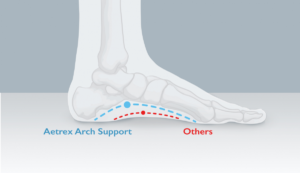
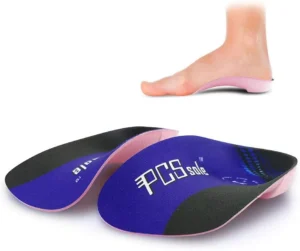
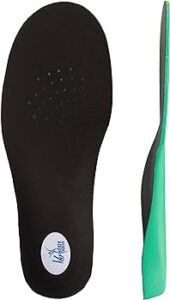
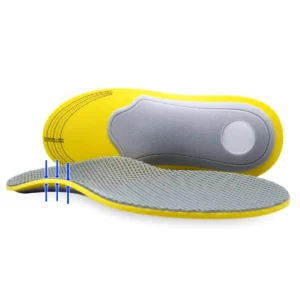
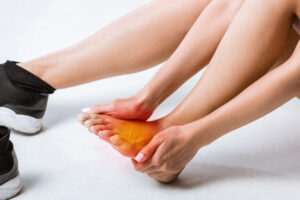



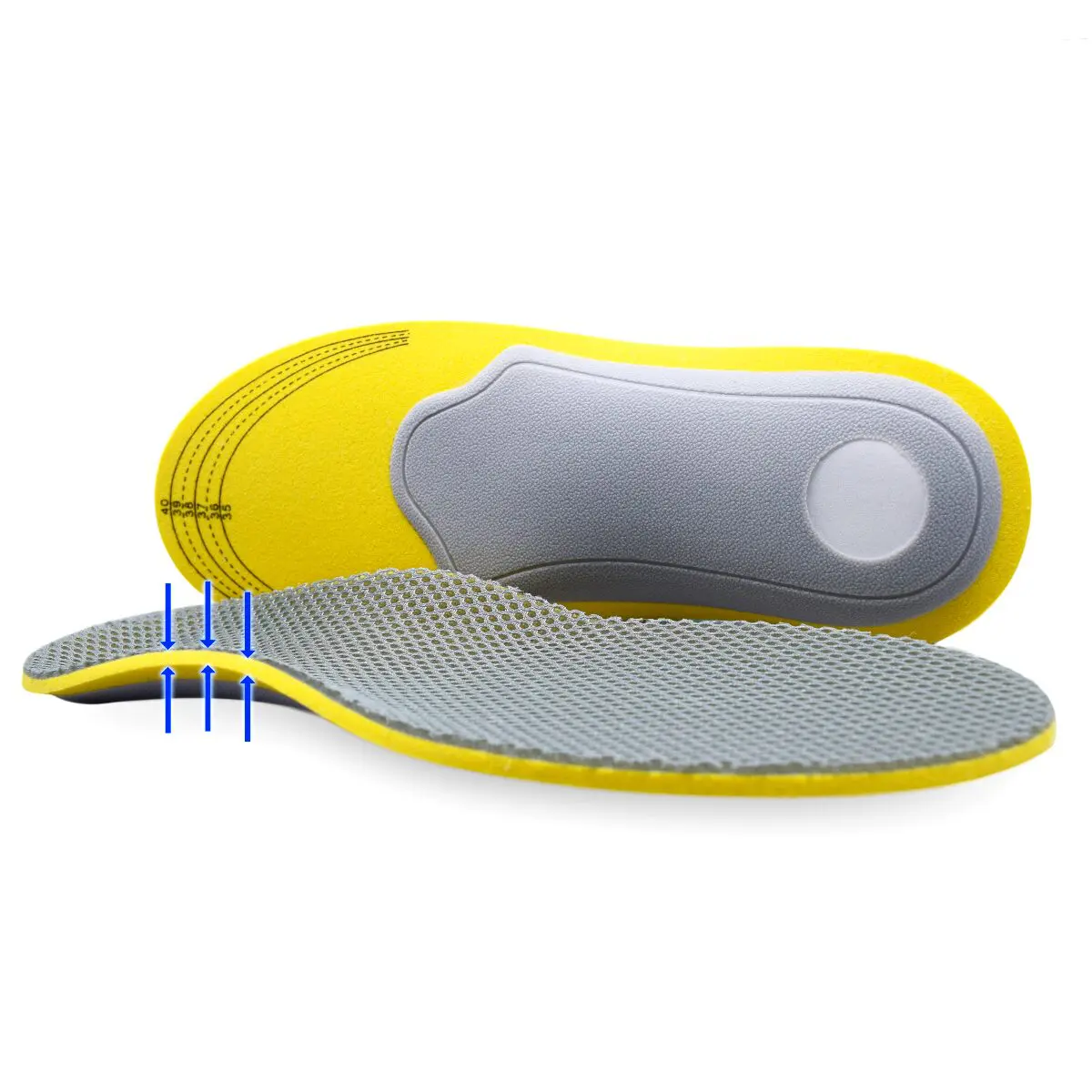
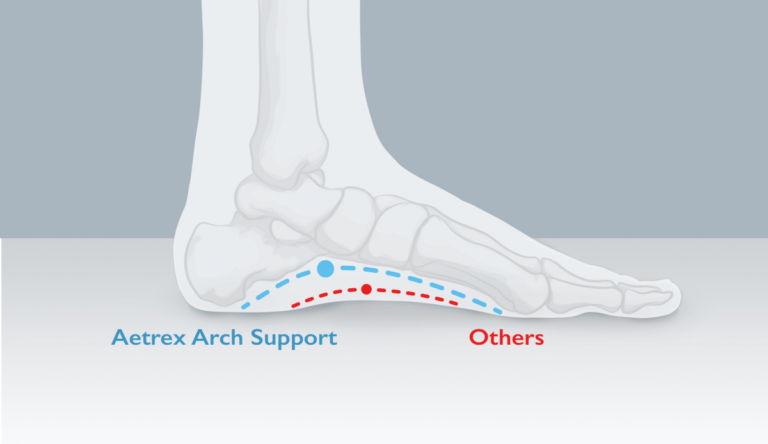
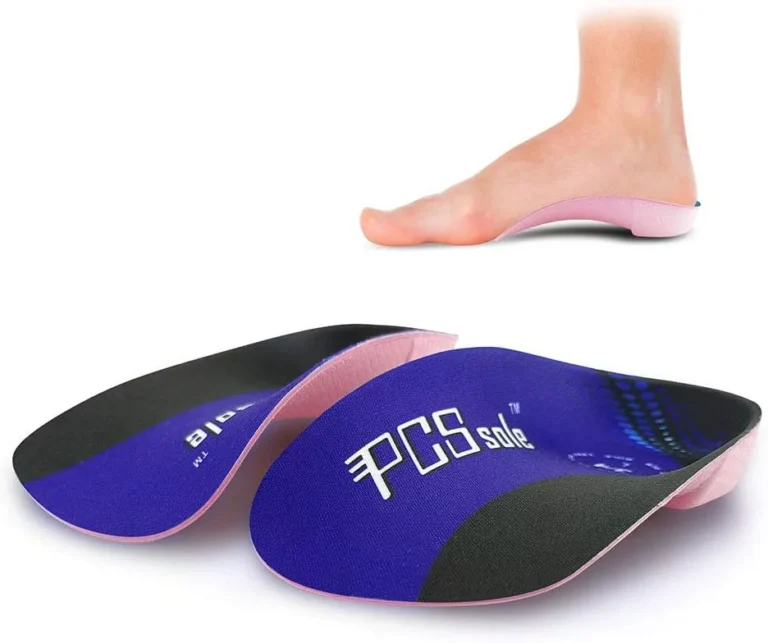
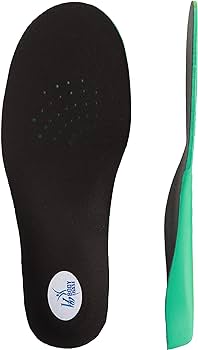

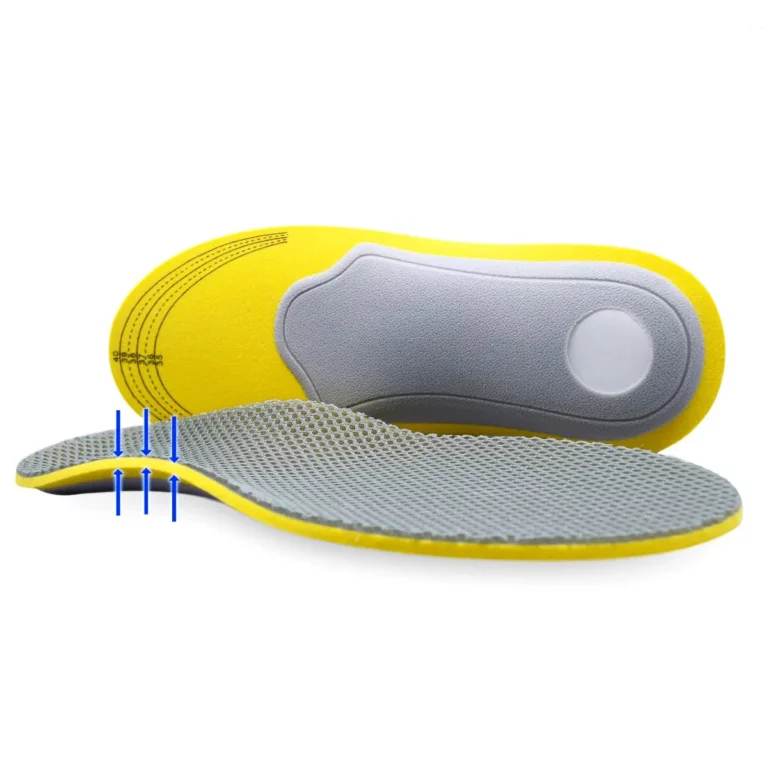
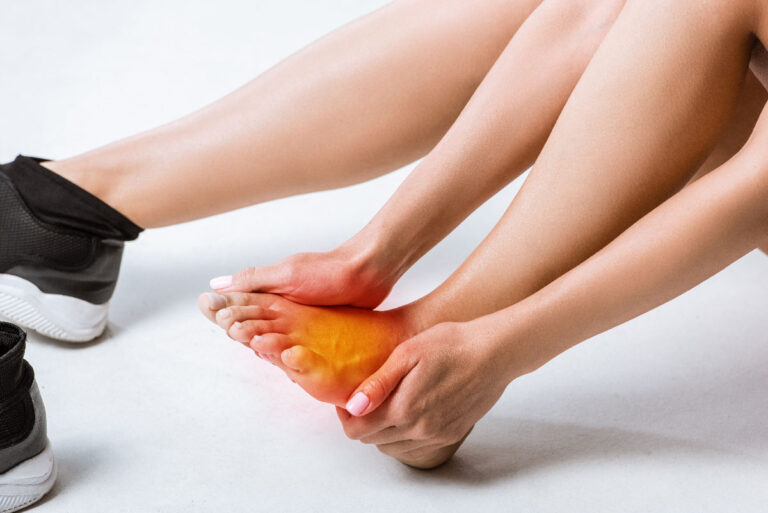


+ There are no comments
Add yours